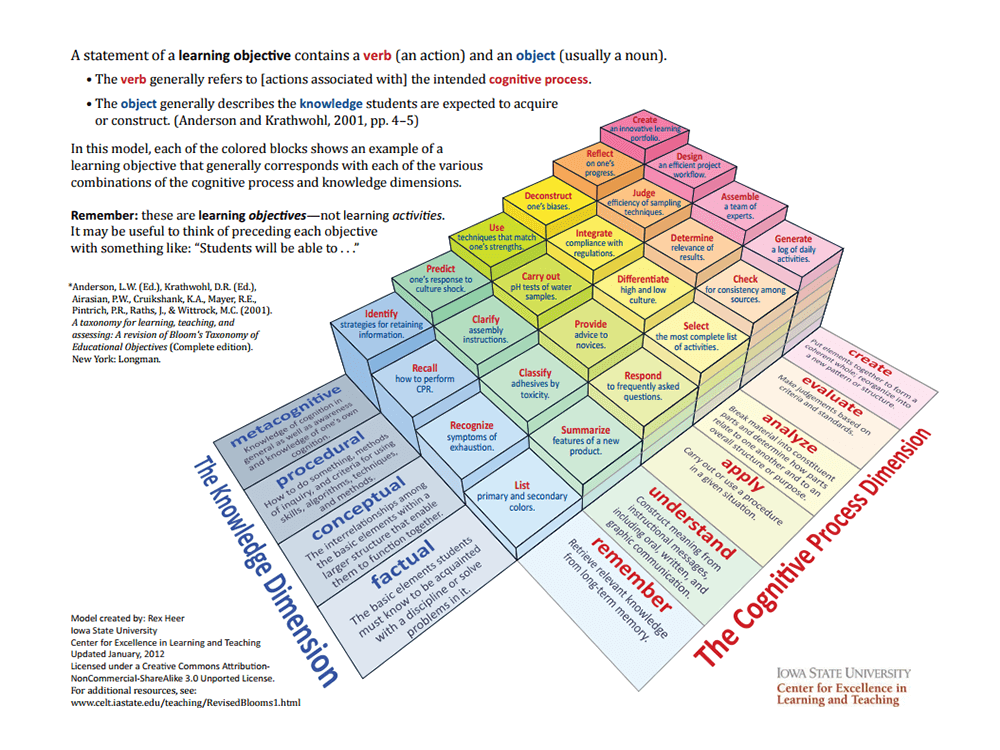
What Does Bloom’s Taxonomy Look Like In 3D?
by TeachThought Staff
Well, technically it’s a 2-dimensional representation of a 3-dimensional model, but being limited to two-dimensional screens, this is about as close as we can get.
(Soon you’ll be able to 3D print what you see–download the plans and print it. Or play with it in virtual reality. Eventually a hologram you can manipulate digitally–pass around the room like a tennis ball, then fling it into the ether….)
See Course: An Introduction To Bloom’s Taxonomy by TeachThought University
Rex Heer at Iowa State University, who created the graphic, explains:
Among other modifications, Anderson and Krathwohl’s (2001) revision of the original Bloom’s taxonomy (Bloom & Krathwohl, 1956) redefines the cognitive domain as the intersection of the Cognitive Process Dimension and the Knowledge Dimension.
This document offers a three-dimensional representation of the revised taxonomy of the cognitive domain. Although the Cognitive Process and Knowledge dimensions are represented as hierarchical steps, the distinctions between categories are not always clear-cut.
For example, all procedural knowledge is not necessarily more abstract than all conceptual knowledge; and an objective that involves analyzing or evaluating may require thinking skills that are no less complex than one that involves creating. It is generally understood, nonetheless, that lower order thinking skills are subsumed by, and provide the foundation for higher order thinking skills.
A statement of a learning objective contains a verb (an action) and an object (usually a noun).
The verb generally refers to [actions associated with] the intended cognitive process.
The object generally describes the knowledge students are expected to acquire or construct. (Anderson and Krathwohl, 2001, pp. 4–5)
In this model, each of the colored blocks shows an example of a learning objective that generally corresponds with each of the various combinations of the cognitive process and knowledge dimensions. Remember: these are learning objectives—not learning activities.
It may be useful to think of preceding each objective with something like: “Students will be able to . . .”
It’s a fairly straight-forward interpretation of the original (revised) model, but adds Cognitive Process and Knowledge Dimensions as groundwork to create verbs and example tasks for each level within said domain. If you’re ready to move past the pretty Bloom’s Taxonomy posters and big words and begin to look at strategies for teaching with the Bloom’s model, a relatively advanced model like this may be right for you.
You can find the full pdf on Iowa State University’s site.
See also How To Write Lesson Objectives Using Bloom’s Taxonomy